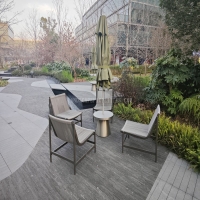Welcome to the website for landscape facilities products and knowledge.
How do landscape tables incorporate local climate-specific adaptations in their design?
Landscape tables are more than just functional outdoor furniture—they are thoughtfully designed to harmonize with local climates, ensuring longevity and sustainability. By incorporating climate-specific adaptations, these tables address environmental challenges while enhancing usability and aesthetic appeal.
In hot, arid regions, landscape tables often feature materials like heat-resistant metals or treated woods to withstand intense sunlight and minimal moisture. Designs may include shaded canopies or perforated surfaces to promote airflow, reducing surface temperatures. Conversely, in rainy or humid climates, tables utilize water-resistant materials such as marine-grade polymers or rust-proof metals, along with sloped surfaces to prevent water pooling.
Cold climates demand frost-resistant materials like dense hardwoods or composite plastics, while designs may integrate heated elements or windbreaks for comfort. Additionally, sustainable practices like using locally sourced materials or recycled components reduce the carbon footprint while ensuring cultural and ecological relevance.
Beyond functionality, climate-adaptive landscape tables reflect biophilic design principles, blending seamlessly into natural surroundings. Whether through drought-tolerant plant integrations or modular designs for seasonal flexibility, these tables exemplify how thoughtful design can unite resilience, sustainability, and beauty in outdoor spaces.
Related search:

Recommendation
Metal structure rattan chair without armrests for single person, with woven seat and backrest.